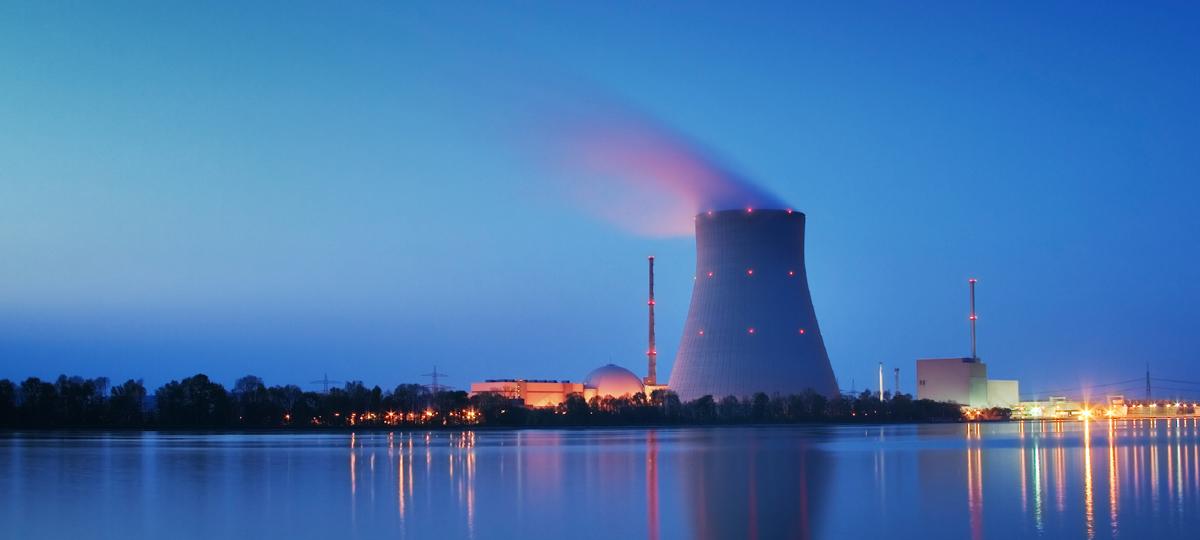Condenser
Table of Contents
| Condenser on the outside of an AC unit [1] |
|---|
What is a Condenser?
Condensers are a type of heat exchangers which changes the phase of a refrigerant from gas to liquid. Note that there are multiple types of heat exchangers that can be used, in this page condensers instruments will be outlined. A page on heat exchanger can be found here, Heat Exchangers. They can be found on the outside of an air conditioner or heat pump. Depending on the time of year it either releases or collects heat [2].
Types of Condensers
There are three main types of condensers: air-cooled, water-cooled, and evaporative [3]. The main difference is how each removes the excess heat.
Air-cooled
The refrigerant moves through the condenser's copper tubing, which is called the condenser coil. Air-cooled condensers remove heat by dispersing air over the condenser coil.
There are two types of air-cooled condensers.
Natural convection
The removal of heat is done by natural means (ex. buoyancy) in this condenser via condenser coils. When the air meets the hot condenser tubes heat is absorbed from refrigerant and the temperature of the air increases. The warm air rises, as it has a lower density, and the cold air removes the heat from the condenser [4].
Forced convection
The removal of heat in this type of air-cooled condenser is implemented by having a fan or blower incorporated in the condenser to migrate air via fluid currents over the coils at a certain velocity. Fins of the condenser coils are closely spaced, about 5-7 fins/cm, which means dust or dirt can easily pile on them so keeping them clean for optimal performance [5].
Water-cooled
Water-cooled condensers use water to remove heat. [3]These condensers are preferred wherever there is sufficient amount of clear inexpensive water and the water is easily disposable.
There are three types of water-cooled condensers.
Tube-in-tube/Double tube condenser
In this type of condenser there is a water tube inside of a large refrigerant tube and the hot vapor refrigerant enters at the top of the condenser. The heat from the refrigerant is absorbed by water and condensed liquid refrigerant flows at the bottom. Note that the refrigerant tubes are exposed to ambient air meaning that some heat is also absorbed by said ambient air through natural convection.
Shell and coil condenser
In this type of condenser the cooling water moves through the coil causing condensation and the refrigerant, in vapor form, enters the shell.
Shell and tube condenser
In this type of condenser there is a cylindrical steel shell which contains many straight water tubes. These tubes expands into grooves in the tube sheet holes forming a vapor-tight fit. This tube sheet is welded to the shell at both ends and the removable water boxes are bolted to the tube sheet at each end to facilitate the cleaning of the condenser.
Evaporative
In evaporative condensers, vapor filled coils are constantly wetted on the outside by a water system. The wetted coils are hot enough to evaporate the water. The steam created is quickly replaced with air by a system of fans. The evaporation of water removes heat from the coil and in turn the vapor causing it to condense [6].
Partial and Total Condensers
As the name suggests, total condensers condense all the vapor into liquid. And partial condensers condense a portion of the vapor [7]. In most distillation processes, the uncondensed vapor is then removed [8]. Illustrations of partial and total condensers are below.
| How a partial condenser works for a distillation tower [7] | How a total condenser works for a distillation tower [7] |
Applications in Engineering
Condensers are very versatile and can be found anywhere. Condensers can be found in daily items, such as air conditioners and refrigerator units, or industrial chemical processes such as distillation and steam power plants.
| Condenser on Refrigerator [9] | Steam Power Plant [10] |
|---|---|
Environmental Impacts
The main factor that affects the energy used is the efficiency of the heat transfer. Build up of unwanted foreign material around and on the surface where the heat transfer is done is the biggest contributor of inefficient heat transfer. The build up is referred to as “fouling”. The build up also contributes to rougher surfaces and narrower spaces for fluid to flow around the heat transferring surface. This decreases the pressure of the fluid. Overall fouling causes the condenser to use more electricity to reduce the heat. In cases where the energy supply is based on fossil fuel consumption, this adds to the carbon emissions of the condenser [11].
| Fouling [12] |
|---|
Contributors:
| User | Last Update |
|---|---|
| Former user (Deleted) | 1425 days ago |
| Former user (Deleted) | 1432 days ago |
| Former user (Deleted) | 1433 days ago |
Faculty Advisor: Sarah Meunier





